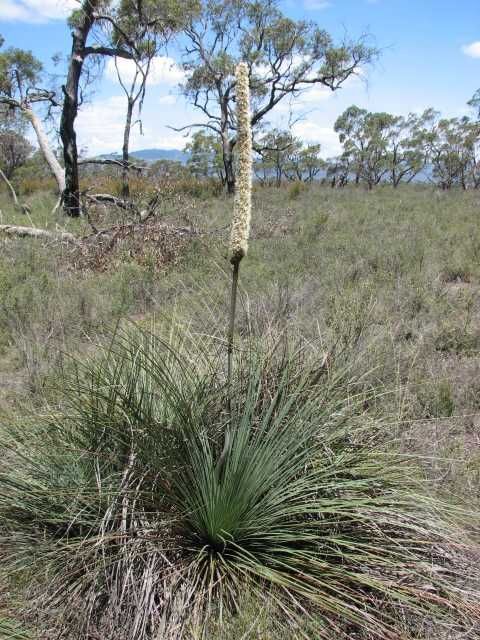Xanthorrhoea caespitosa
D.J.BedfordStem almost totally subterranean, branched underground. Leaves forming an uneven open tuft, depressed-obtriangular, sometimes concave above, 2.3–7.0 mm wide, 1–2 mm thick, grey, glaucous or green. Inflorescence with flower-bearing part 45–65 cm long, 22–28 mm diam., 0.3–0.5 times as long as non-flowering axis which is 90–120 cm long and 10.0–17.5 mm diam.; bracts around flowers prominent, narrow-triangular. Sepals with apex acute, without an adaxial projection; petals hairy in distal portion, with a large adaxial projection. Flowers Oct.–Dec.
LoM, Wim, GleP, VVP, OtP, WaP, GGr, DunT. Also SA.
The taxon extends discontinuously from the South Australian border, from the Big Desert in the north to the Dergholm and Dartmoor districts in the south, east to the Grampians, with highly disjunct eastern outliers at Port Campbell in the western Otways and at Anglesea in the eastern Otways.
This species has previously been regarded as a putative hybrid between Xanthorrhoea australis and X. minor. Plants of at least one of these two species may occasionally be found near populations of X. caespitosa.
 Spinning
Spinning

